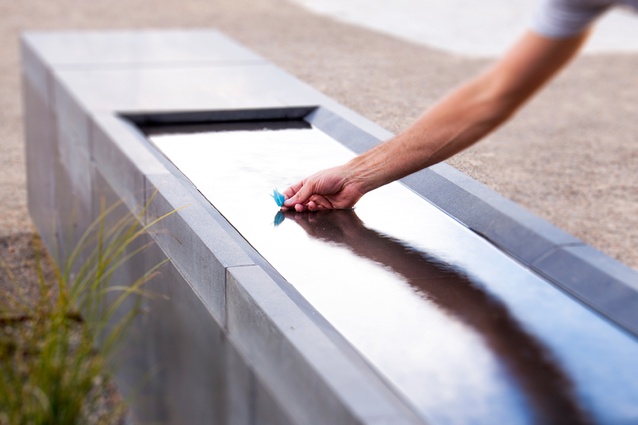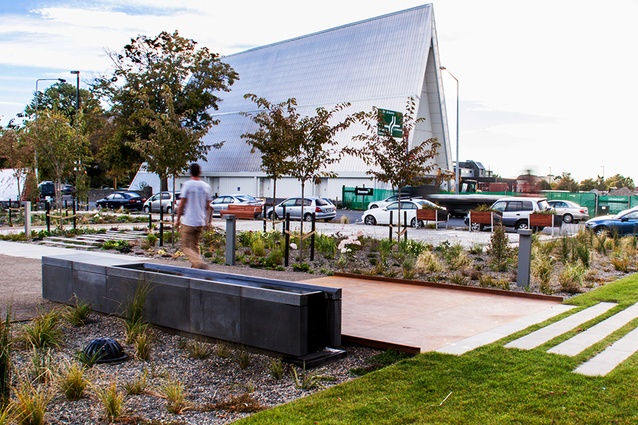Jasmax’s CTV memorial completed
The collapse of the CTV building in Christchurch during the 2011 earthquake resulted in the loss of 115 lives and many more injuries. The site, on the corner of Cashel and Madras streets, remains one of the most poignant reminders of the event for local residents.
The design team at Jasmax, working with development company Ōtākaro Limited, came on board to create a memorial at the site. Jasmax describes creating the tribute as a highly sensitive process. They wanted to deliver a design that payed homage to the gravity and sadness of the space but also aimed to provide a little lightness and hope.
Rob Lawry, landscape architect and project lead, says, “Jasmax came to this project when there was an overall concept in place and then we added to it. The key question we were working with was: does this serve the wishes of the families? This is not an earthquake memorial as such, that formal site exists down at the official memorial wall on the Avon River. This is an intimate space, a site of memory.”

The building’s foundations formed the basis of the memorial. “The slab was a key driver in the design. It was to remain in place as a remnant, a memory. The slab was not a flat piece of concrete, it has various levels, cracks and visible ground beams. We filled them with planting,” says Lawry.
He continues, “It can be confronting, so we designed it in such a way that you can walk off Cashel St, across the grass that is the former carparks, rinse your hands in the water feature, and walk out across the bridge, all without touching the slab if you so choose.”
The families of those affected by the collapse hoped that the site would convey youthfulness, as many of those who lost their lives were young. The designers planted new cherry blossom trees and kowhai trees alongside the site’s four surviving trees.
“It is designed to be organic,” says Rob. “We wanted the space to be open ended in the way people interact with it. There is a perforated steel wall where people have come and laid tributes, and a plinth, but we have left it deliberately inviting to place tribute in other areas. It’s not prescriptive.”

The memorial was completed in just eight months with contractors City Care and JFC. Rob says, “Everyone understood the sensitivity of the area. We all wanted to create something special.”
The space was opened with a blessing on 21st February 2018, on the eve of the seven-year anniversary of the earthquakes. In order to come full circle and acknowledge those that had lost loved ones, some areas were left unplanted, and the families were invited to put the final plants in the ground. Rob notes the feedback received so far has been overwhelmingly positive.
As the city rebuilds, the memorial site will serve as a functional pocket park, yet always remain respectful and reverent of the lives lost there. The new plantings on the site will now grow into the evolving city, and the CTV memorial site will sit in the midst of Christchurch’s new residential design.












